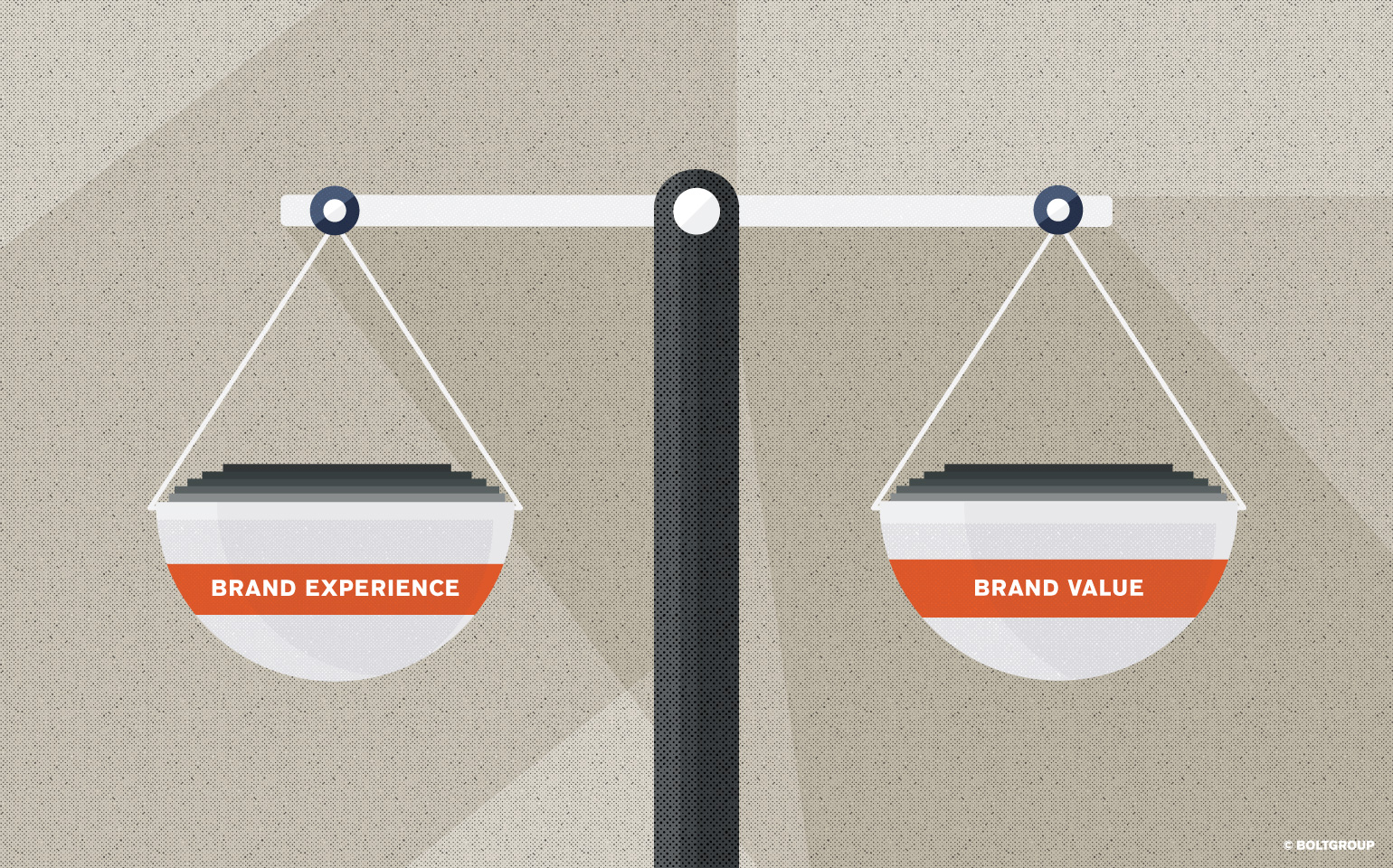At BOLTGROUP we define brand experience as:
- the intentional design of moments that
- physically, visually, and verbally integrate into people’s lives and lifestyle,
- expressing the purpose, promise and pillars of the brand,
- triggering an emotional response.
Does this seem like something that happens in your company every day? If not, you’re not alone. Listen and learn how to change that.
I wrote about “moments that matter” last year and shared a true example of my brand experience with American Express, which to this day, has solidified my loyalty to the brand. I’m sure you have had a positive brand experience that was visceral enough to leave a lasting impression and respect for the brand. It was likely an intentionally designed experience that effortlessly integrated into that moment in your life, giving you clear insight into why the brand exists and its value.
There are many more examples of great brand experiences. Warby Parker, maker of vintage inspired eyeglasses, guides you through the most engaging experience you could ever ask for. And completely sets your mind at ease about ordering eyewear online. (The five for 5 is awesome!)
Also consider Land Rover. From the moment you walk onto the dealership lot, you see polished, pristine Rovers tilted and forced into impossible angles on the rock bed. Right off you get that it’s not your ordinary SUV. Further emphasizing the point is the Alpine ski lodge showroom and take-away collateral that leaves you feeling as if you’ve just vacationed with the Queen. The Land Rover Experience, provided all over the world, allows anyone [for a price] to spend a day enjoying life as it can be in a Land Rover.
But an experience can also go the other way, too. In 2010, I wrote a Fast Company blog asking Sears to bring back their brand experience, knowing that would be the only way to save such a great brand. Alas, at this writing, it looks like it will not come true. Executive management—not understanding the power of brand—has had everything to do with killing a ubiquitous brand that held the heart, head, and hand of the American public for most of the 20th century. The reason the retail experience died is because the brand ecosystem died.
Perhaps Craftsman, Kenmore, and Diehard will have future lives as someone else’s brands to cover employee pension plans. The travesty of this colossal mismanagement of a brand cannot be underestimated. At some point, it is not about shareholders’ wealth, it is about the brand. And it can happen at any level.
Last year, a survey of 2,200 global marketing leaders was conducted to explore the challenges and opportunities around brand experiences. Eighty-one percent believed experience is a stronger driver of brand performance than communications. However, only 52% believed that the brand experience their company delivered was leading their industry segment. Much was attributed to senior leaders not appreciating the true value of brand as a strategic weapon.
So how does the lion’s share of an organization get on the same page as the marketing department? By looking at the facts. Business goals aligned with brand strategy have a direct correlation to positive behavioral change for that brand, both internally and externally. Creating brand experiences (internally first, by connecting employees to the brand emotively) will significantly increase the outward-facing projection of the brand as the corporate culture and value. Put another way, the brand experience is the responsibility of everyone in the organization. Front door to back. And senior management’s responsibility is to imbue the brand’s purpose, promise, and pillars in every transaction with their employees, thereby creating brand ambassadors. The intrinsic value that resides in each interaction involving the brand helps manifest an emotional experience and increases the value of the organization, the brand, and its products and services in the mind of the person experiencing the brand. This is part of an overall brand ecosystem, which is the symbiotic relationship built between an organization, its many facets, and the governance of the brand.
Every organization, through its brand, is capable of creating these brand experiences. It might be how HR conducts interviews that make your company more attractive to candidates. It could be how customer service provides an online communication thread to track personal experiences in an emotive way. Or maybe it’s how accounts payable approaches a delinquent payer in a way that’s reflective of the brand’s customer empathy. The list goes on. It could be the delight your customer feels when opening your product packaging to discover that every detail reflects the quality you promised them. It could be the way your receptionist answers the phone. It could be your business card.
One of the most important things you can do for your company, its shareholders, its customers, and its associates, is to believe. Believe in the power of the brand experience. And then empower those who can create the moments that matter for your brand. We can help.
